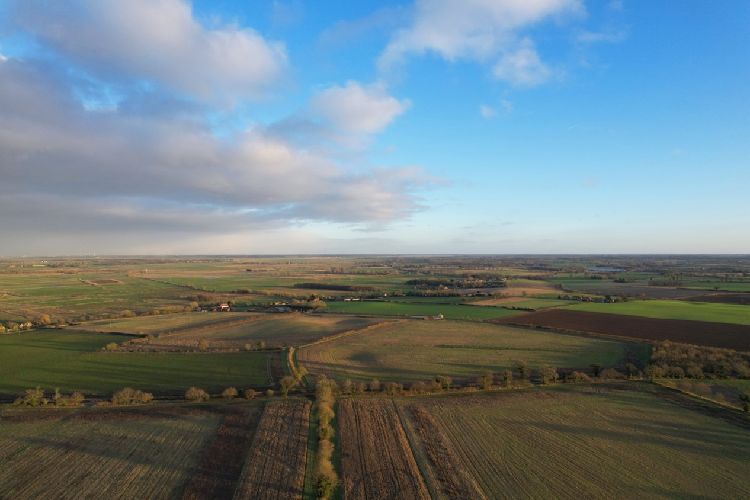Situated on the bank of the River Yare in the Broads National Park, Langley Abbey Environment Project (LAEP) is seeking to restore nature across the Langley Abbey Estate in order to reverse biodiversity loss, conserve peatland and improve water quality throughout the Yare Valley.
Over 600 acres of habitats such as wildflower meadows, lowland fen, traditional orchards, wet woodland, ponds, reedbeds, mixed scrub and species-rich hedgerows are being created, enhanced and maintained exclusively for wildlife, contributing significantly to the nature recovery network. Deep peat soils are being conserved, protecting not only an important habitat mosaic but also the world’s largest terrestrial carbon store.
Natural capital markets such as biodiversity net gain (BNG) present businesses with an opportunity to make meaningful contributions towards local nature recovery in one of the most ecologically sensitive locations in the country.

250 HECTARES
Restoring nature at a landscape-scale

STRATEGICALLY SIGNIFICANT
2,500ha of SSSI within a 10km radius
The seminal report “Making Space for Nature” (2010) emphasised the need for a bigger, better and more joined up approach to conservation. Yet over a decade on, more than 75% of priority habitats in Norfolk and Suffolk are located in small patches under 10 hectares in size with poor connectivity, whilst only 5% of the priority habitats across the two counties exists in parcels larger than the 40-hectare threshold advocated by Natural England. At 250 hectares and located directly opposite the RSPB-managed, 800-hectare Mid Yare National Nature Reserve, LAEP truly embodies the Lawton principles.
Langley Abbey Estate is steeped in history, from the Scheduled Ancient Monument and Grade 1 Listed Building of Langley Abbey – originally built in 1195 and restored by its current owners in 2010 – to the medieval peat cuttings of Carleton Broad. LAEP will see the Langley Abbey Estate returned to nature, once again becoming the dynamic and thriving ecosystem it was in its past.
Frequently Asked Questions
Yes, BNG units can be purchased directly from LAEP.
For enquiries about BNG units, please contact us.
Yes, LAEP is registered on the Biodiversity Gain Site Register (Reference BGS-051124001).
Area, hedgerow and watercourse units are available.
To discuss availability in more detail, please email [email protected]
LAEP is responsible for submitting an application to Natural England to amend the Biodiversity Gain Site Register and allocate the purchased BNG units to the purchaser’s development. The BNG units can then be relied upon by the developer for the purpose of discharging their Biodiversity Gain Condition (pre-commencement). The process ensures transparency and accountability, and follows the procedure set out in the Biodiversity Gain Site Register Regulations 2024. All responsibility and liability for maintaining the BNG units lies with LAEP and never with the purchaser.
Yes. Purchasing units upfront can be a fantastic way to avoid delays down the line. Whilst the planning condition requiring the approval of a Biodiversity Gain Plan is a pre-commencement condition – meaning you only need to satisfy the local planning authority (LPA) that you will meet 10% BNG before you start works on site, not before you submit your planning application – it is important that BNG is factored into the planning process long before submission, and LPAs may seek additional information at application stage about how the applicant intends to achieve 10% BNG. Purchasing units in advance or securing them via an option agreement will dramatically speed up the post-permission process, enabling development to commence more quickly. That said, please note that units can only be allocated to a development on the Biodiversity Gain Site Register once a positive decision notice has been issued for the development in question.







